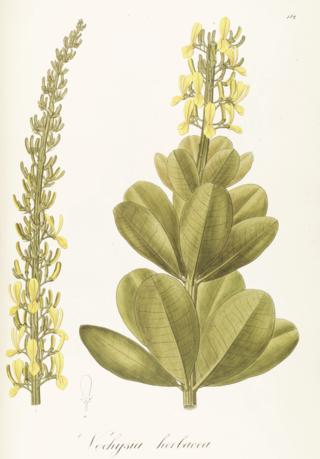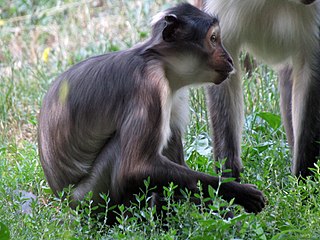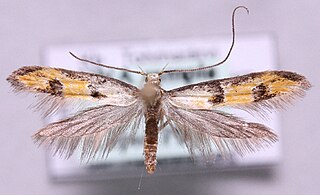
Hamsters are rodents belonging to the subfamily Cricetinae, which contains 19 species classified in seven genera. They have become established as popular small pets. The best-known species of hamster is the golden or Syrian hamster, which is the type most commonly kept as a pet. Other hamster species commonly kept as pets are the three species of dwarf hamster, Campbell's dwarf hamster, the winter white dwarf hamster and the Roborovski hamster.

A rose is either a woody perennial flowering plant of the genus Rosa, in the family Rosaceae, or the flower it bears. There are over three hundred species and tens of thousands of cultivars.They form a group of plants that can be erect shrubs, climbing, or trailing, with stems that are often armed with sharp prickles. Their flowers vary in size and shape and are usually large and showy, in colours ranging from white through yellows and reds. Most species are native to Asia, with smaller numbers native to Europe, North America, and northwestern Africa. Species, cultivars and hybrids are all widely grown for their beauty and often are fragrant. Roses have acquired cultural significance in many societies. Rose plants range in size from compact, miniature roses, to climbers that can reach seven meters in height. Different species hybridize easily, and this has been used in the development of the wide range of garden roses.

Chinchillas are either of two species of crepuscular rodents of the parvorder Caviomorpha, and are native to the Andes mountains in South America. They live in colonies called "herds" at high elevations up to 4,270 m (14,000 ft). Historically, chinchillas lived in an area that included parts of Bolivia, Peru and Chile, but today, colonies in the wild are known only in Chile. Along with their relatives, viscachas, they make up the family Chinchillidae. They are also related to the chinchilla rat.

Coronaviruses are a group of related RNA viruses that cause diseases in mammals and birds. In humans and birds, they cause respiratory tract infections that can range from mild to lethal. Mild illnesses in humans include some cases of the common cold, while more lethal varieties can cause SARS, MERS and COVID-19. In cows and pigs they cause diarrhea, while in mice they cause hepatitis and encephalomyelitis.

Emydidae is a family of testudines (turtles) that includes close to 50 species in 10 genera. Members of this family are commonly called terrapins, pond turtles, or marsh turtles. Several species of Asian box turtles were formerly classified in the family; however, revised taxonomy has separated them to a different family (Geoemydidae). As currently defined, the Emydidae are entirely a Western Hemisphere family, with the exception of two species of pond turtle.

The Agonoxeninae are a subfamily of moths.

An argus, or argus pheasant, is a member of a clade in the tribe Pavonini of the family Phasianidae, containing two species of bird that are closely related to peafowl.

Vochysiaceae is a plant family belonging to the order Myrtales.

The Chrysomeloidea are an enormous superfamily of beetles, with tens of thousands of species. The largest families are Cerambycidae, long-horned beetles, with more than 35,000 species, and Chrysomelidae, leaf beetles, with more than 13,000 species.

Lontra is a genus of otters from the Americas.

The white-eyelid mangabeys are African Old World monkeys belonging to the genus Cercocebus. They are characterized by their bare upper eyelids, which are lighter than their facial skin colouring, and the uniformly coloured hairs of the fur. The other two genera of mangabeys, Lophocebus and Rungwecebus, were once thought to be very closely related to Cercocebus, so much so that all the species were placed in one genus, but Lophocebus and Rungwecebus species are now understood to be more closely related to the baboons in genus Papio, while the Cercocebus species are more closely related to the mandrill.

The banded linsang is a linsang, a tree-dwelling carnivorous mammal native to the Sundaic region of Southeast Asia.

The genus Cathartes includes medium-sized to large carrion-feeding birds in the New World vulture (Cathartidae) family. The three extant species currently classified in this genus occur widely in the Americas. There is one extinct species known from the Quaternary of Cuba.

A species is often defined as the largest group of organisms in which any two individuals of the appropriate sexes or mating types can produce fertile offspring, typically by sexual reproduction. It is the basic unit of classification and a taxonomic rank of an organism, as well as a unit of biodiversity. Other ways of defining species include their karyotype, DNA sequence, morphology, behaviour, or ecological niche. In addition, paleontologists use the concept of the chronospecies since fossil reproduction cannot be examined. The most recent rigorous estimate for the total number of species of eukaryotes is between 8 and 8.7 million. About 14% of these had been described by 2011. All species are given a two-part name, a "binomial". The first part of a binomial is the genus to which the species belongs. The second part is called the specific name or the specific epithet. For example, Boa constrictor is one of the species of the genus Boa, with constrictor being the species' epithet.
A species description is a formal scientific description of a newly encountered species, typically articulated through a scientific publication. Its purpose is to provide a clear description of a new species of organism and explain how it differs from species that have been previously described or related species. For a species to be considered valid, a species description must follow established guidelines and naming conventions dictated by relevant nomenclature codes. These include the International Code of Zoological Nomenclature (ICZN) for animals, the International Code of Nomenclature for algae, fungi, and plants (ICN) for plants, and the International Committee on Taxonomy of Viruses (ICTV) for viruses. A species description often includes photographs or other illustrations of type material and information regarding where this material is deposited. The publication in which the species is described gives the new species a formal scientific name. Some 1.9 million species have been identified and described, out of some 8.7 million that may actually exist. Additionally, millions more species have gone extinct over the history of life on Earth.
Heinemannia albidorsella is a species of moth of the family Elachistidae. It is found in southern France and on Corsica and Sardinia.

Heinemannia is a genus of moths of the family Elachistidae.

Heinemannia festivella is a species of moth of the family Elachistidae. It is found from Sweden in the north, through central Europe to southern Europe. It is also found in Asia Minor, the Middle East and central Asia.

Parametriotinae is a subfamily of moths in the family Elachistidae.

Diogenes heteropsammicola is a species of hermit crab discovered during samplings between 2012 and 2016 in the shallow waters of the Japanese Amami Islands. This D. heteropsammicola is strongly associated with the walking corals. This hermit crab species is unique due to the discovery that they use living, growing coral as a shell. The live in the inside of the coral and vary from other types of hermits. Crustaceans of this type commonly replace their shell as the organism grows in size, but D. heteropsammicola are the first of their kind to use solitary corals as a shell form. Heteropsammia and Heterocyathus are the two solitary corals that this hermit species has been observed as occupying. These two coral species are also used as a home by symbiotic Sipuncula of the genus Aspidosiphon, which normally occupy the corals that were previously occupied by crabs.


















